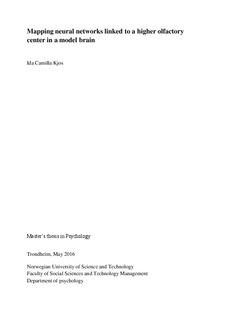| dc.description.abstract | The sense of smell provides important information about the surrounding environment, affecting a diverse set of behaviors in a wide range of animals. As a vital sense being importantly interconnected with learning and memory, olfaction has a profound impact on the life of many animals, humans included. The organization of the olfactory pathway shows many striking similarities across phyla, opening the possibility for studying general sensory principles using model organisms. With its advanced sense of smell and a relatively simple nervous system, the moth is a favorable model organism, having provided insight in several issues concerning chemosensory mechanisms. While the initial levels of the olfactory pathway have been relatively well explored, the higher levels are still poorly understood. The present study is the first to investigate neuronal networks connected to a higher olfactory center in heliothine moths, using a mass staining technique. Thus, by applying fluorescent dye into the lateral horn, distinct regions being directly connected with this neuropil were labeled both in the ipsi- and contralateral hemisphere. In addition to complementing previous studies, particular networks not previously described were characterized. The identification of a new contralateral antennal-lobe tract is considered to be of particular interest. | nb_NO |
